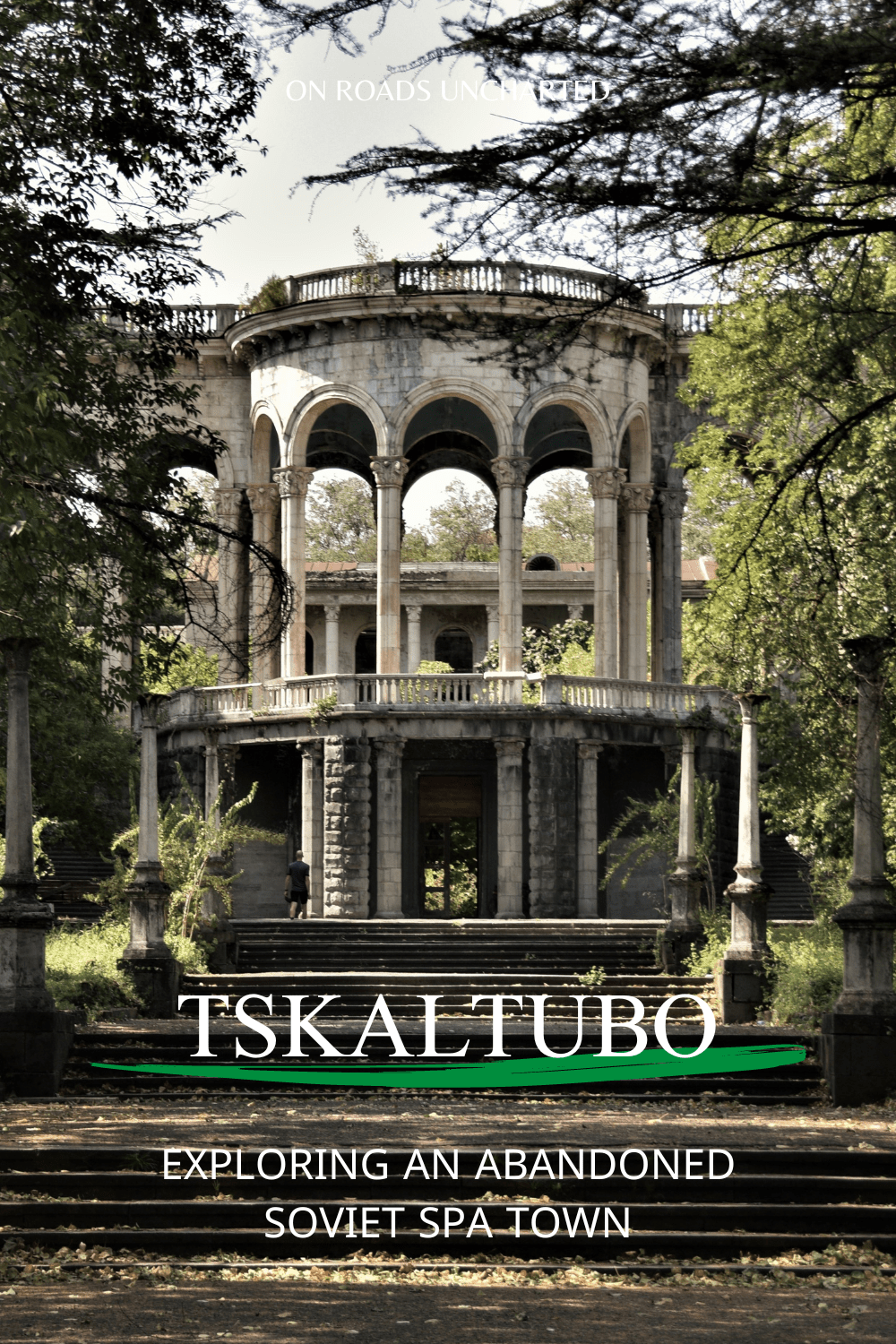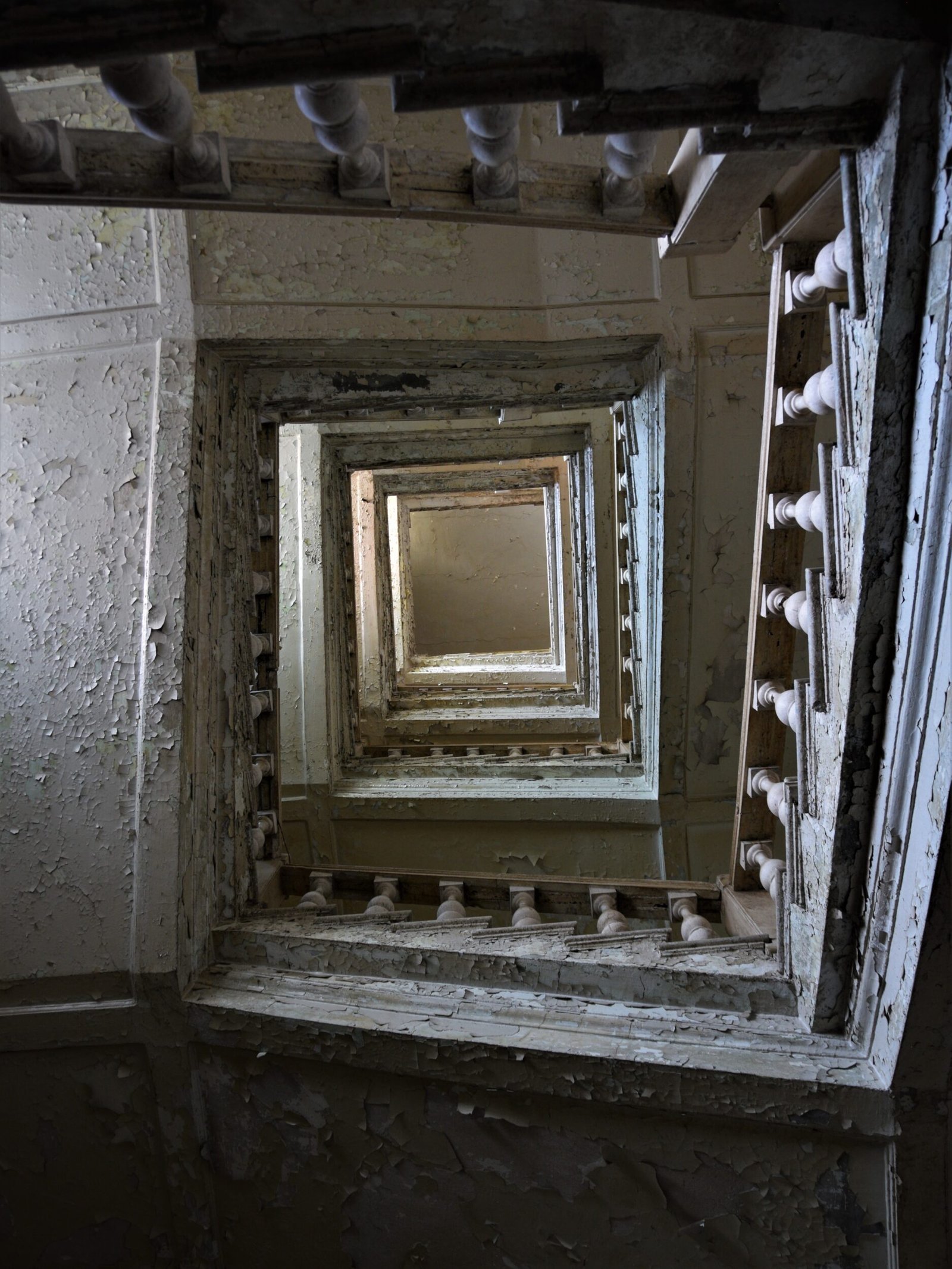Just a short ride outside of Kutaisi lies one of Georgia’s most eerie places: the semi-abandoned spa town of Tskaltubo. What was once the Soviet Union’s finest resort, has now become one of the country’s most unique and exciting travel destinations.
At first glance little alludes to the splendour that once dwelled in Tskaltubo. However, behind the lush foliage the traces of the past are ubiquitous. Scattered around the central park, no less than 25 sanatoria, bathhouses, and hotels rest derelict amidst the thriving greenery that has reclaimed large parts of the town.
Where once thousands of citizens from across the former USSR would have travelled to, given their state-ordered R&R (rest and relaxation), nowadays those with a fancy for the obscure are scouring for Tskaltubo’s glorious years.
Formerly praised for the healing properties of its mineral waters and sulfur springs, Tskaltubo has turned into an extraordinary wonderland of discovery and exploration for seasoned urbexers and casual travellers alike.
This guide will provide you with all the necessary information to plan a trip to this unique Georgian town independently from Kutaisi, incl. public transportation, detailed accounts of the places I visited, safety tips, and more.
A BRIEF HISTORY OF TSKALTUBO
Although the thermal springs of Tskaltubo had been known to the Georgian people for centuries, it wasn’t until the times of the Russian Empire that foreign researchers started to take notice of their alleged healing properties. Subsequently hailed as the “Waters of Immortality”, the first bathhouse was erected in the 1870s, however, it took a further half a century before the full potential of Tskaltubo’s mineral waters would be thoroughly explored and exploited.
Beginning in the 1920s, the territory, after being acquired by the Soviet state, was declared a balneological resort (a place for the treatment of illness by bathing) and by the 1950s Tskaltubo had transformed into the flagship spa town of the USSR, boasting no less than 22 neoclassicistic sanatoria and hotels, as well as nine bathhouses, and attracting more than 120.000 people annually.
During its heyday, up to four trains daily commuted between Moscow and Tskaltubo, carrying citizens of all classes towards their state-sponsored retreat. Even Stalin himself is said to have made the journey down to his homeland on two occasions (having been prescribed therapy due to leg pain), and his private bathroom (Bathhouse Nr.6) and summer dacha can still be visited today.
Following the dissolution of the Soviet Union in 1991, Tskaltubo’s decline came sudden and swift, and the town was virtually left to crumble overnight. This unexpected state of abandonment didn’t last long though as merely a year later the Abkhazian War (1992-93) broke out, and the Georgian government decided to house a few thousands of the displaced in the derelict sanatoria and hotels. Though meant as a temporary measure, today hundreds of families still live in these decaying buildings.
In the last few years, plans have been made to restore Tskaltubo to its old glory and some of the sanatoria have been bought by private investors (and are now unfortunately closed off to the public), however, as of summer 2022 no large-scale changes have materialized yet and the vast majority of buildings can still be explored.
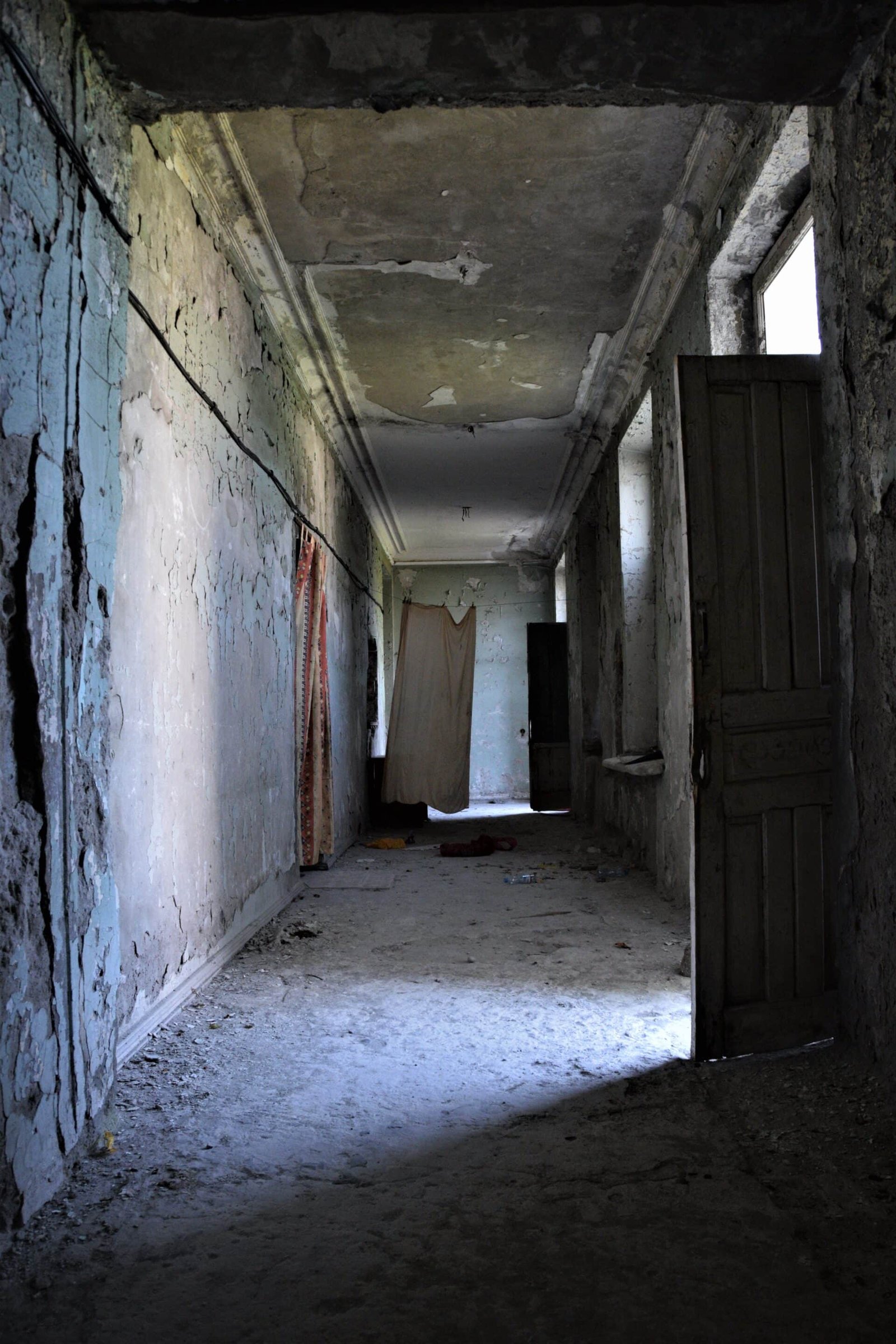
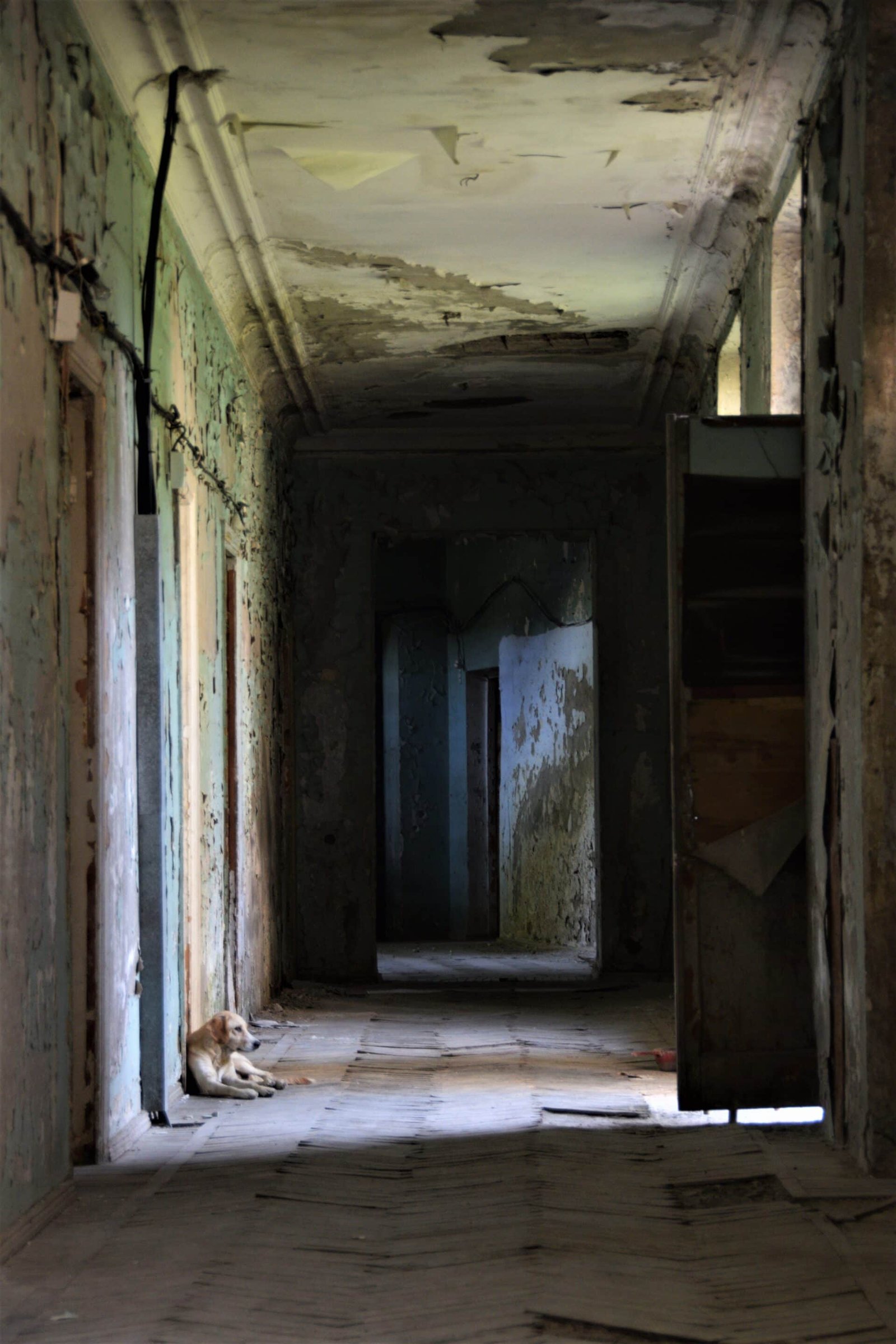
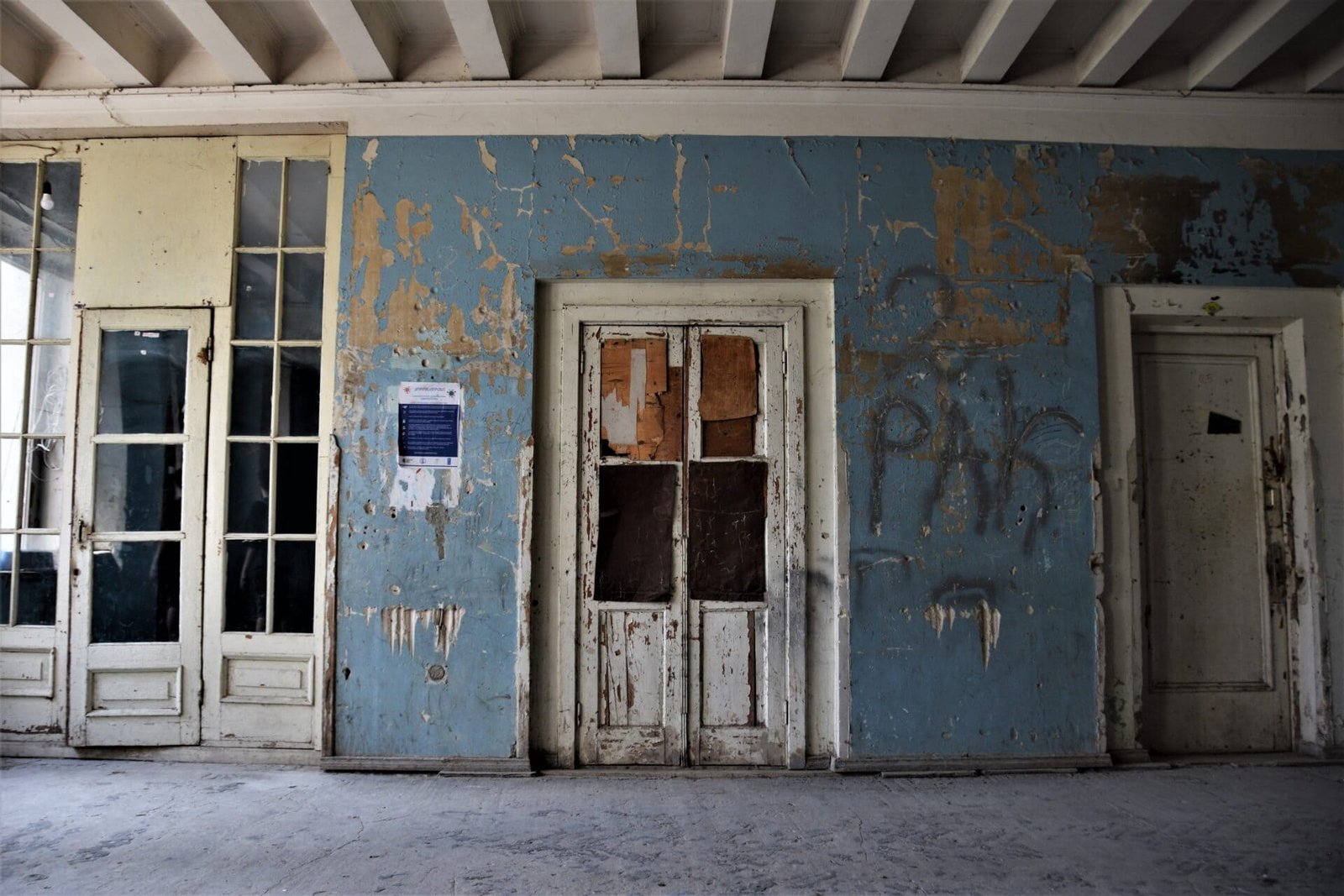
THE "SEMI" IN SEMI-ABANDONED
As mentioned before, despite its outside appearance Tskaltubo (or rather what is left of the former Soviet spa industry) is, for the most part, still very much inhabited. In fact, four out of five sanatoria I visited had people living in them regardless of the horrific state some of these buildings were in.
Although it might appear as if you are exploring an “abandoned” place, in reality you could be walking past someone’s flat or through a family’s backyard. While that shouldn’t deter you from visiting, Tskaltubo does differ greatly from other derelict places in that regard.
Overall, I didn’t get the impression that people seemed to care too much that we were strolling around, however, on one occasion we were met with rather resentful glances.
As a rule of thumb, I would suggest sticking to the parts of the buildings that do look properly abandoned and avoid those that suggest people living there. Also, always greet people you see and if in doubt ask if it is ok for you to be there and take photos.
SAFETY
Since you will enter buildings that have been decaying for three decades, it goes without saying that you will do so at your own risk. Tread carefully when exploring as there is broken glass and rusted metal lying around and some of the wooden floors are in very bad condition. Also look out for potential holes in the ground.
Although there are people living in some of the buildings, there have been no reports of travellers having any troubles with them. In general, Georgia is a very safe country to visit.
You might also encounter stray dogs, however, they didn’t seem too territorial for the most part.
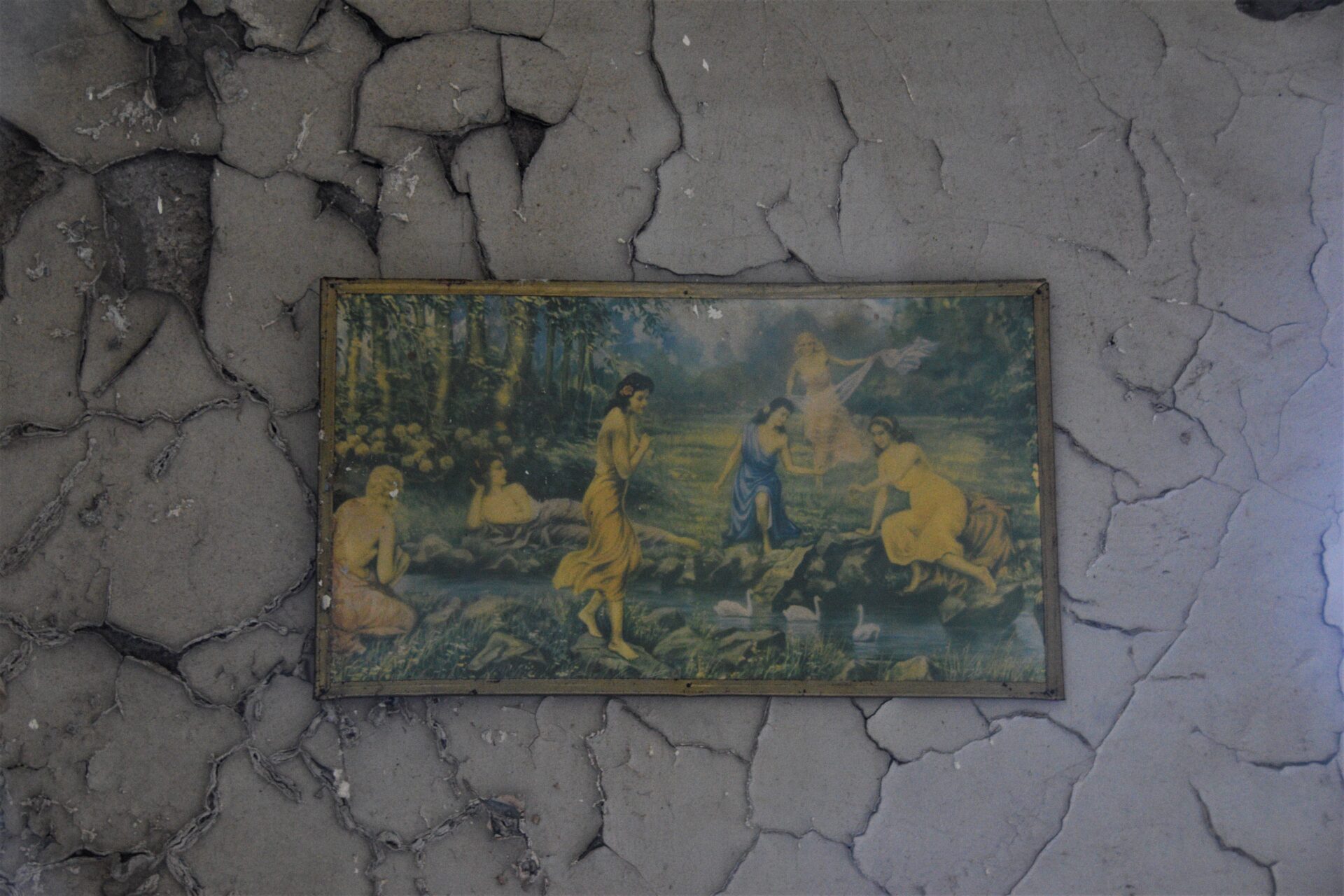
WHEN TO GO
Although Tskaltubo can be visited all year round, the shoulder seasons seem to be the ideal time to go. Temperatures will be moderate, and you will find the park either in full bloom or autumnal attire, adding to the already incredibly photogenic appearance of the place.
I ventured around in the mid of August and while it was bearable (you are gonna be in the shade most of the time), the heat was definitely wearing on us after a while. Georgian summers can be extremely hot and humid.
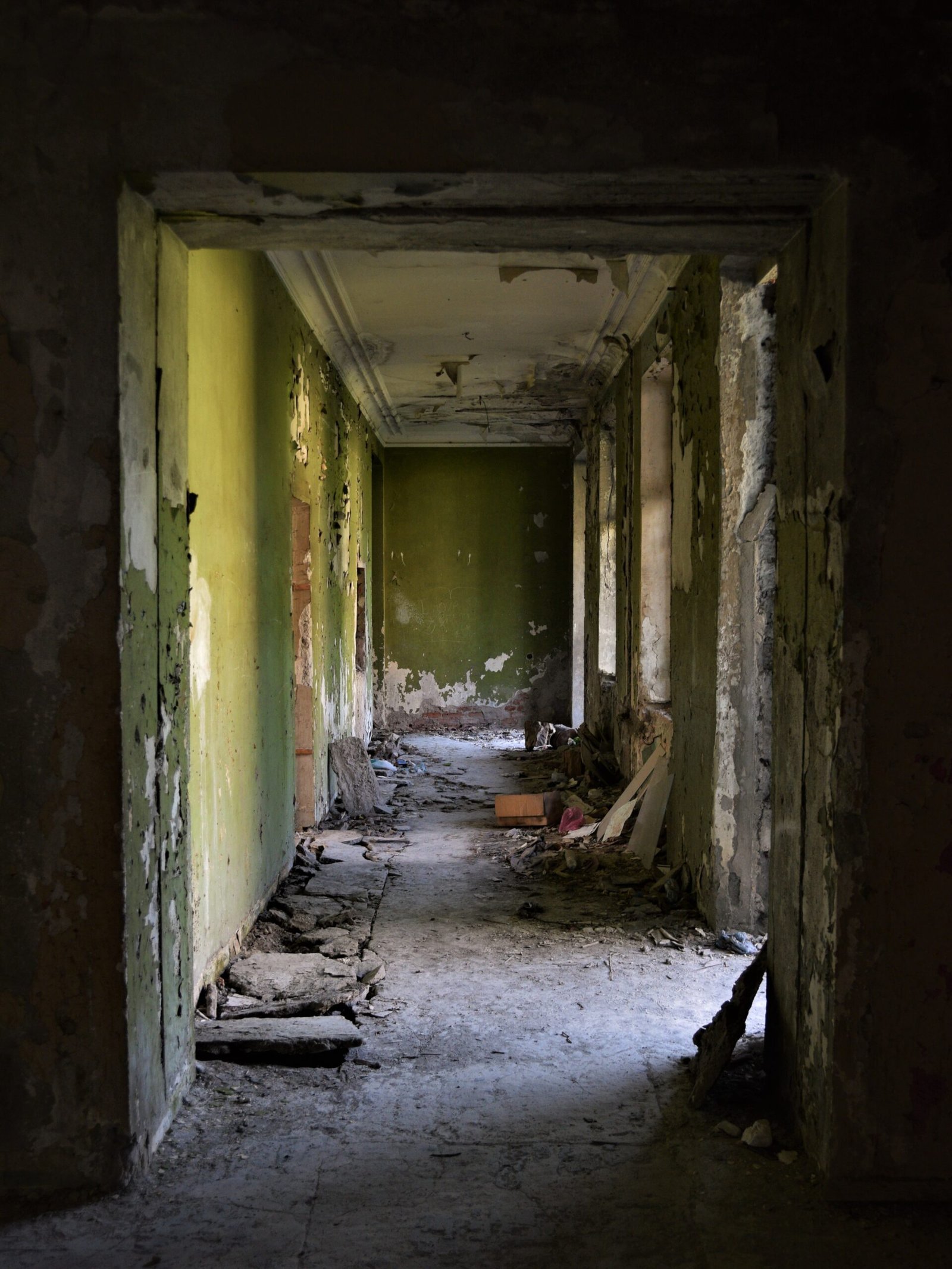

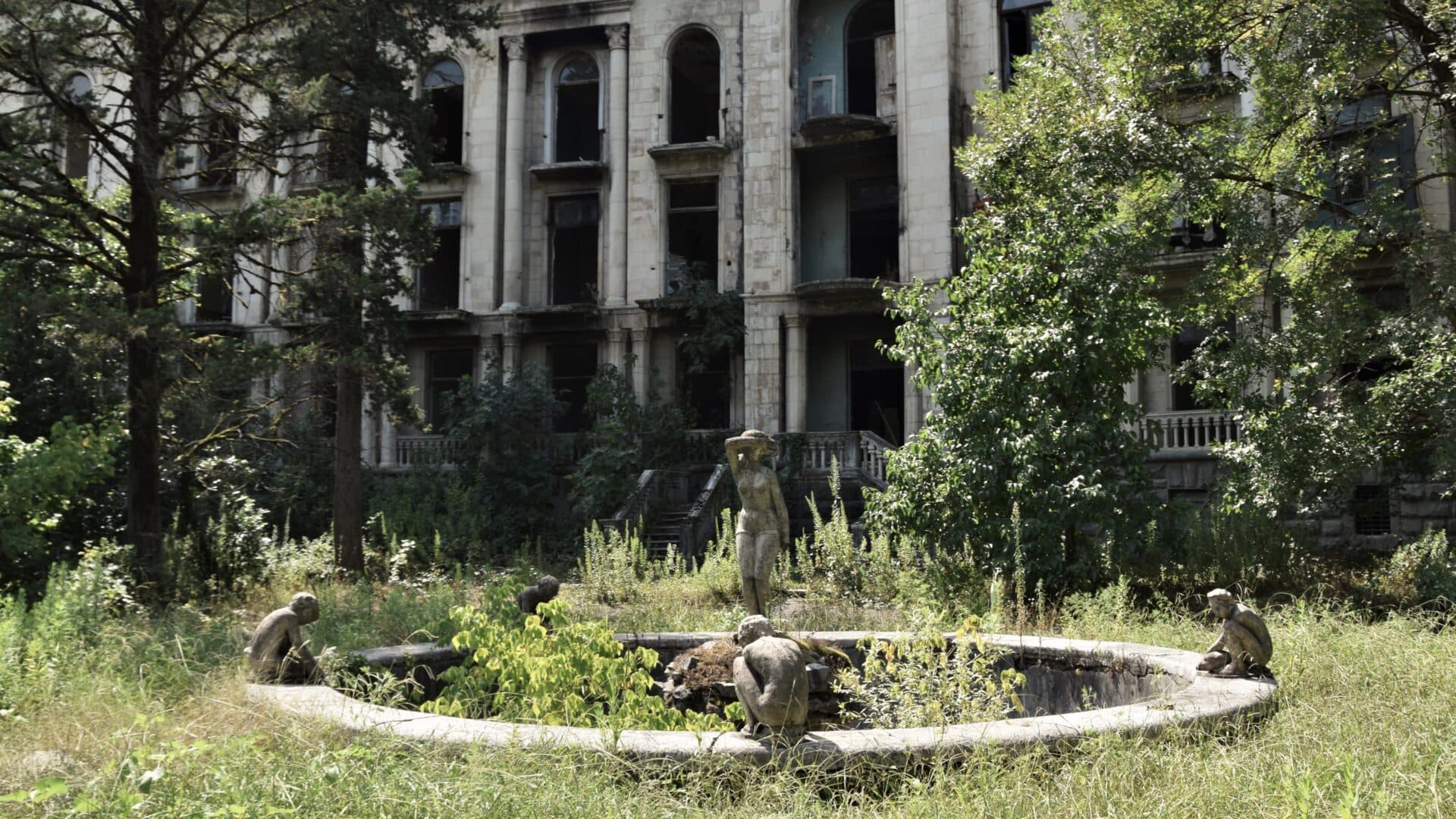
WHERE TO GO
This is not a comprehensive list of all the places that can be visited in Tskaltubo but merely an account of the sanatoria, hotels, and bathhouses I personally explored during my time there.
Be aware that there is more than 25+ buildings worth checking out, located in and around Tskaltubo’s central park.
Although distances are not immense, you will walk quite a bit between different areas. I spend the better part of a day in Tskaltubo (around 7hrs) and managed to see six places in total.
Therefore, in order to visit most of them, you will need at least two days if not three.
SANATORIUM TBILISI
Sanatorium Tbilisi was the first building I entered and probably the creepiest of the lot. Dim corridors, the darkness only disturbed by the occasional beam of light falling through an open door. Creaking parquet floors. The wind rattling through every nook and cranny, playing with your mind.
Everything about it just screamed horror movie! I’m not sure if it was reassuring or disturbing to know that there were people living in these halls. I walked past a guard on the ground floor though, so I guess there won’t be a serial killer waiting for unsuspecting adventurers!
On your way to the roof, you will discover some quite interesting rooms, however, so it is definitely worth exploring the upper floors as well as the overgrown courtyard on the opposite side of the main entrance.
Sanatorium Tbilisi is located near the northern side of the park across the street of the post office.



SANATORIUM GELATI
Besides its intricate façade and a peculiar mosaic in its backyard (unfortunately a dog prevented us from getting a closer look), Sanatorium Gelati was probably the least “spectacular” of the places I explored in Tskaltubo.
The eastern tract of the complex was very much inhabited and the rooms in the western half seemed completely empty for the most part. The colonnaded arcades lining the inner courtyard and the singular belvedere give the sanatorium quite a unique look though and render a visit still worthwhile.
Sanatorium Gelati is conveniently located of the road between Sanatorium Tbilisi and Metalurgist and can be entered either from the front or the western side.
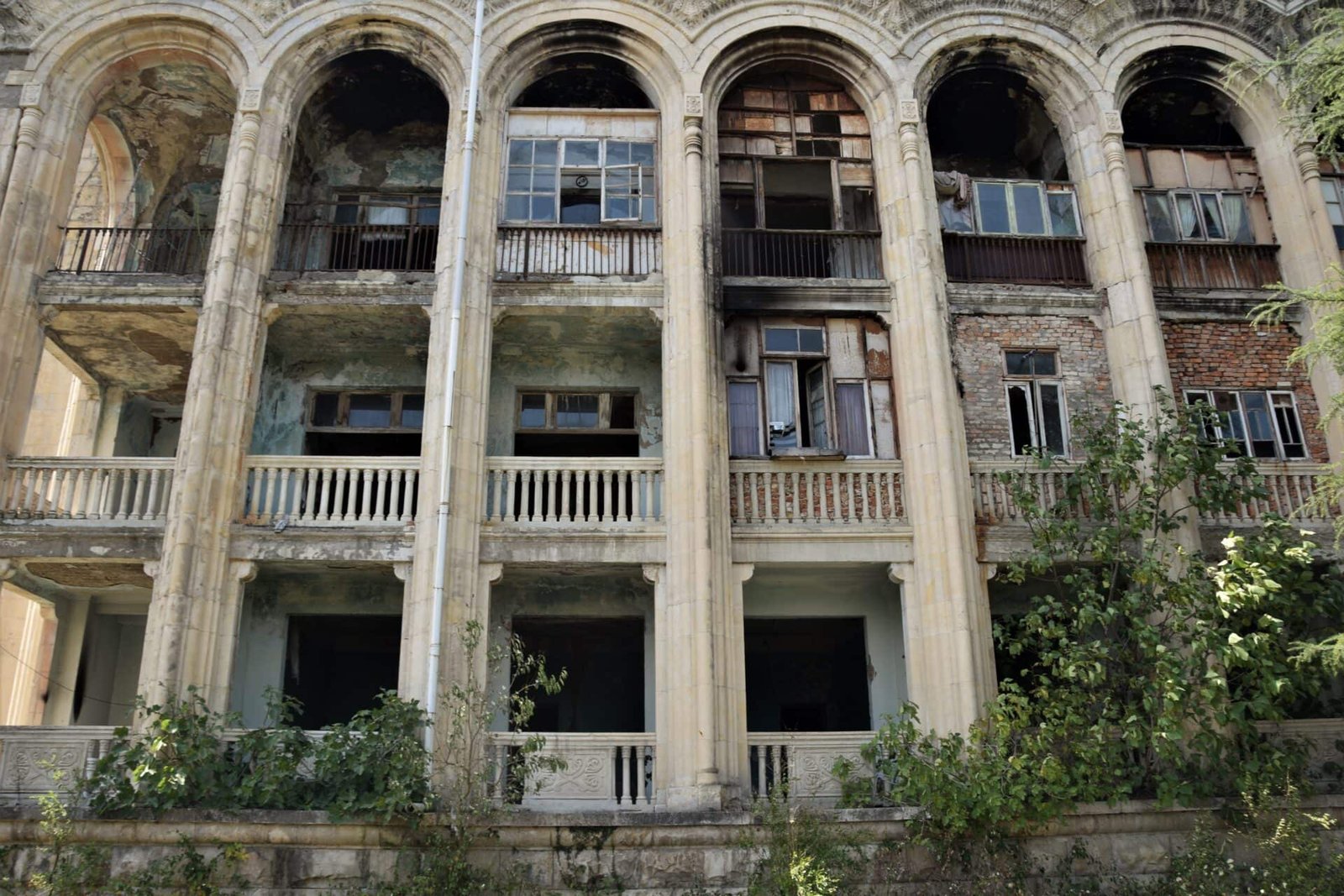
SANATORIUM METALURGIST
By far the best-preserved place I visited in Tskaltubo. With its orange marble walls and columns, detailed railings, intricate stucco, and giant glass chandelier adorning the entrance hall, Sanatorium Metalurgist is an absolute feast for the eyes and the best representation of how the entire town must have looked like during its golden years.
While the upper floors appear to be occupied, the ground floor is completely abandoned. We saw a few people, but they didn’t seem to mind us wandering around.
In the eastern tract you will find the remains of a small library (there might be some interesting books if you can read Georgian), a gym, and a theatre (one of my favourite places), while the western tract features a beautiful sun-filled atrium, which we unfortunately missed.
In order to reach Sanatorium Metalurgist simply follow Baratashvili Street before turning left and entering via the old driveway.
If you are short on time, this is one place you definitely shouldn’t miss!
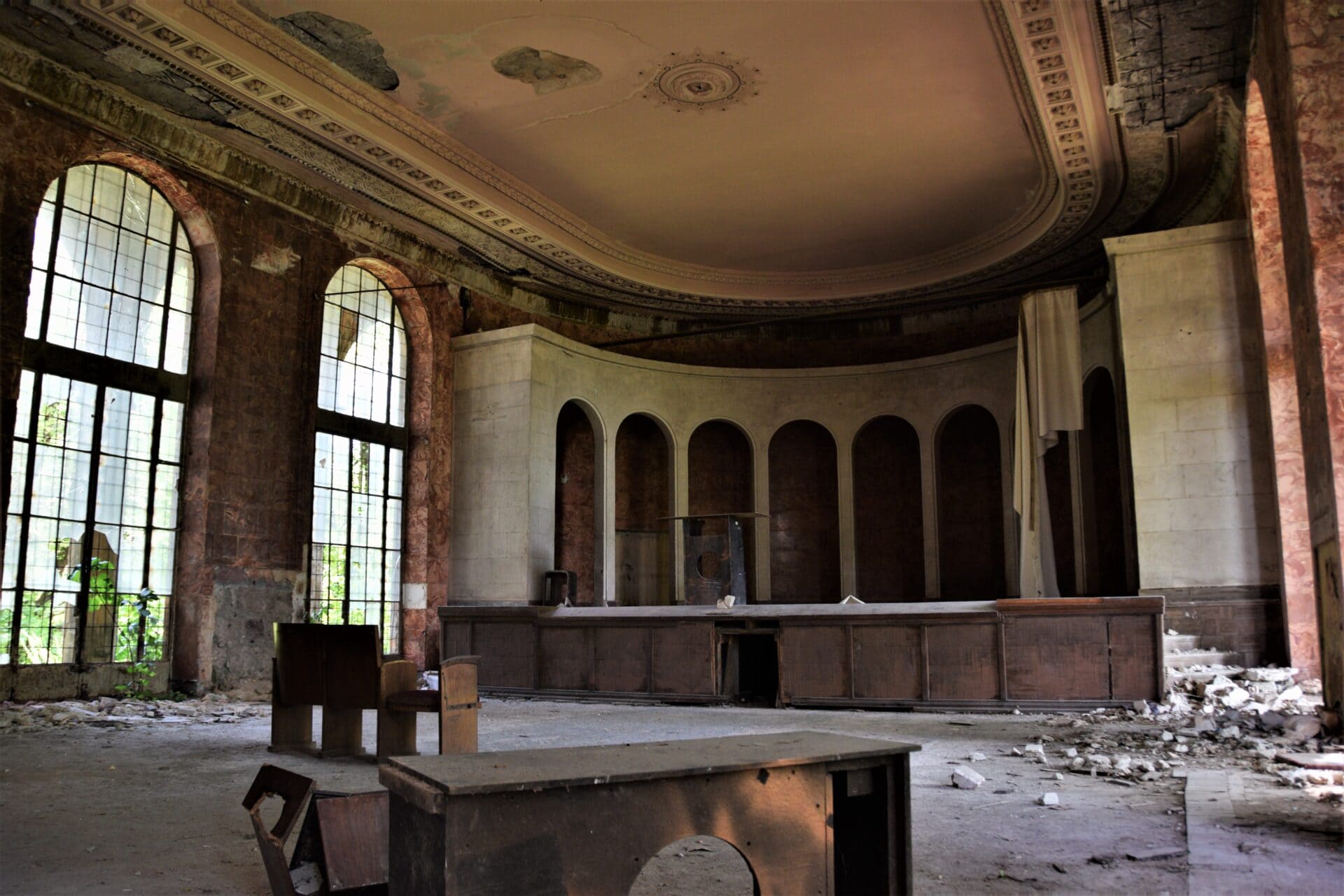
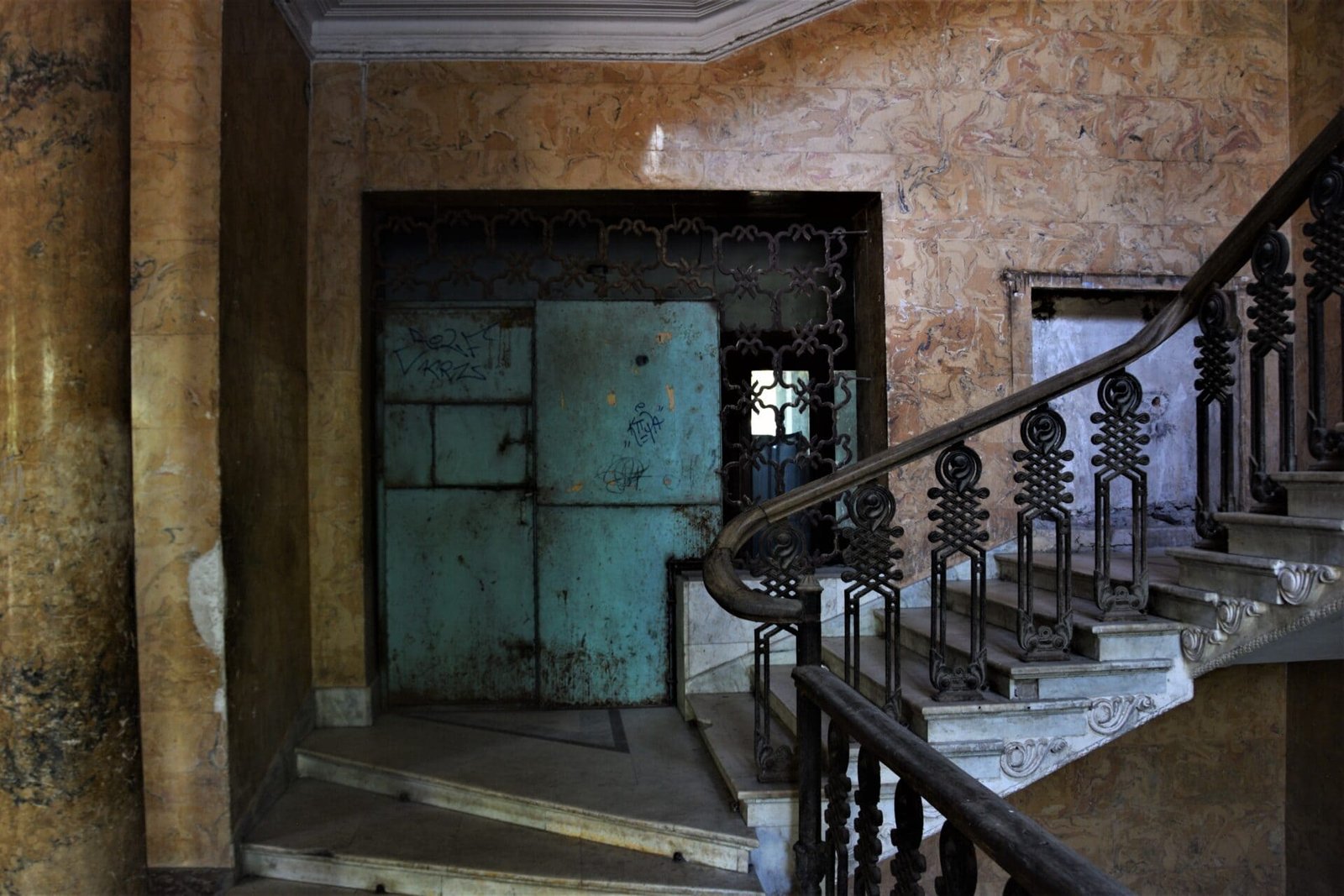
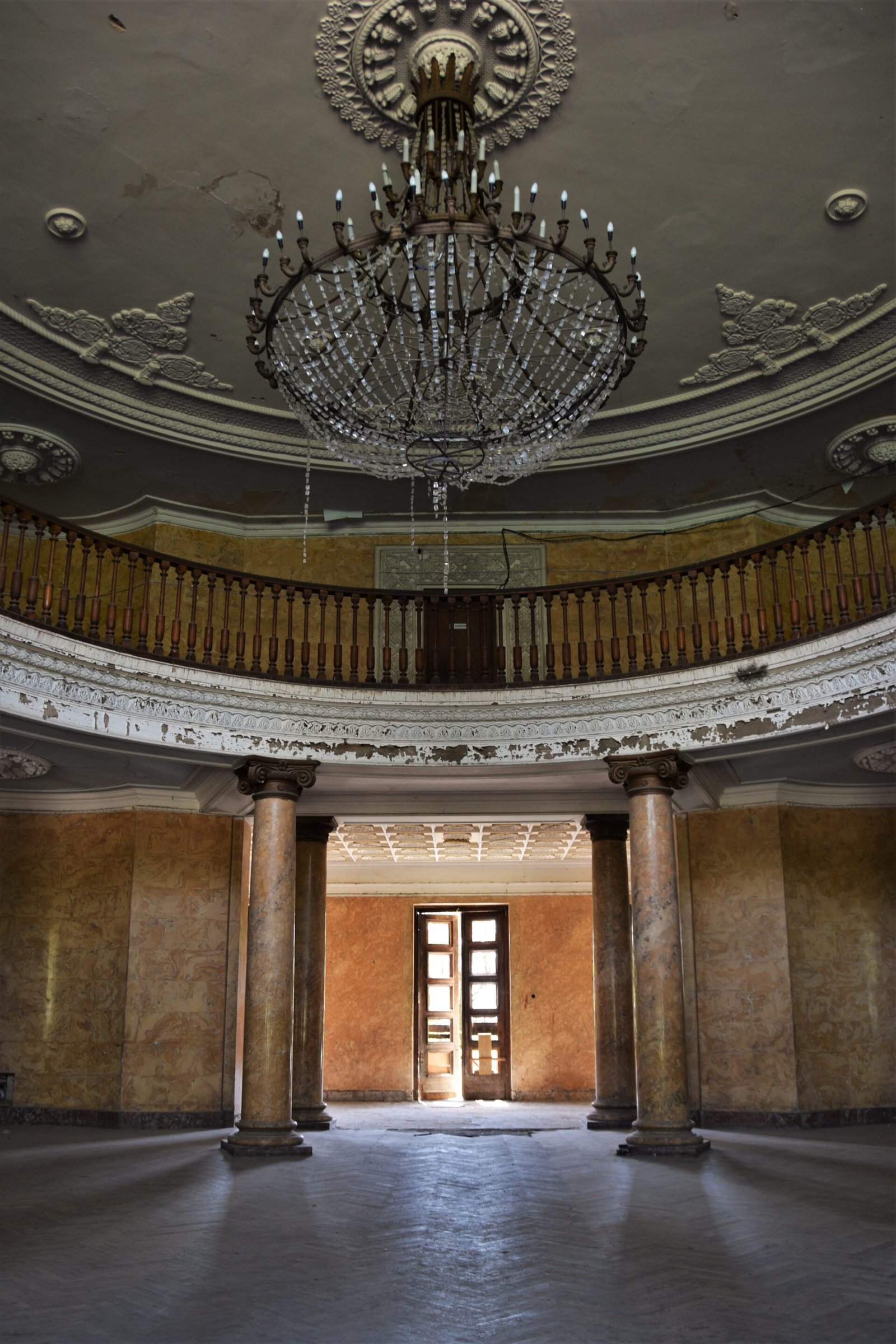
SANATORIUM MEDEA
Together with Metalurgist, Sanatorium Medea, named after princess Medea from the Greek myth of Jason and the Argonauts, might be my favourite of the crumbling sanatoria in Tskaltubo.
In contrast to most of the other places, Medea is entirely abandoned. And it is massive! You could probably spend hours exploring the different floors and tracts of this one complex alone.
The colonnaded front façade is spectacular, and you may even enter the roof via the stairs on either side of the arches. If you follow the small footpath leading westwards from the front entrance, you will also stumble upon a beautiful fountain.

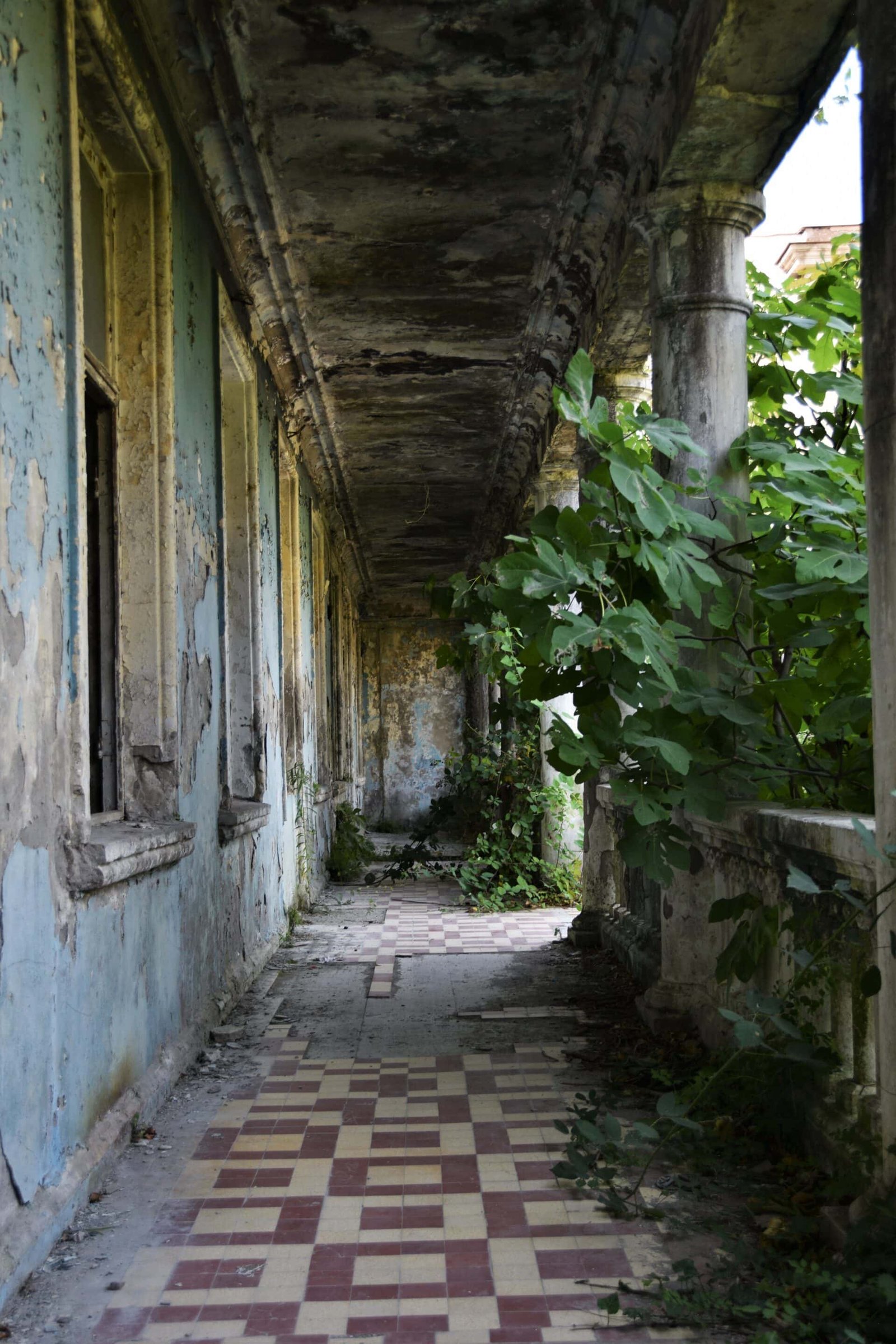
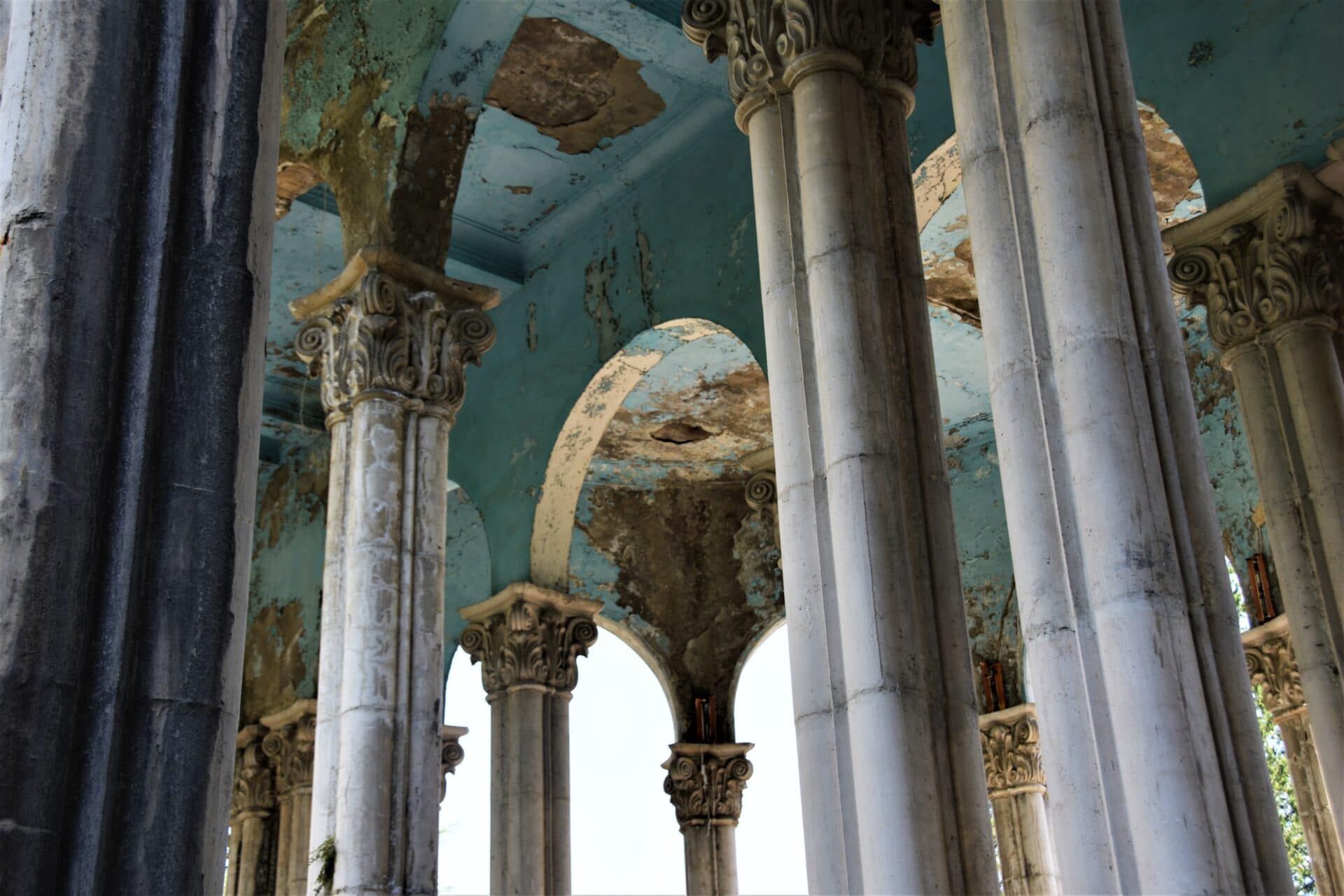
HOTEL AIA
Located along Guramishvili Street veering off from the park, Hotel Aia was probably the biggest surprise of my trip to Tskaltubo and well worth the small detour.
Despite the horribly dilapidated state of the building, it boasts an incredibly well-preserved Soviet mosaic on the ground floor, commemorating the Georgian art of winemaking in colourful detail. There is also a second mosaic on a wall overlooking the parking lot, however, in much worse condition.
There is not much to see in the rest of the building. Most of the rooms have been converted to apartments and the floors seem quite “private”. We carefully ventured into one of them and were met with rather inhospitable and suspicious stares from a lady there.
It is possible to climb up to the roof though, offering great views of the surroundings.

BATHHOUSE No. 8
Just off the main road along the western fringes of the park you will find Bathhouse Nr.8, known for its distinct UFO shape. Positioned around a central fountain are the remains of several rooms furnished with their own fountains and singular pools, again arranged in a circular pattern.
The walls are decorated with weathered murals of beautiful landscapes and animal motifs. Studying these paintings, it suddenly occurred to me how little graffities there are in Tskaltubo. In theory the town should be a sprayer’s paradise but for some odd reason the buildings have remained virtually untouched.
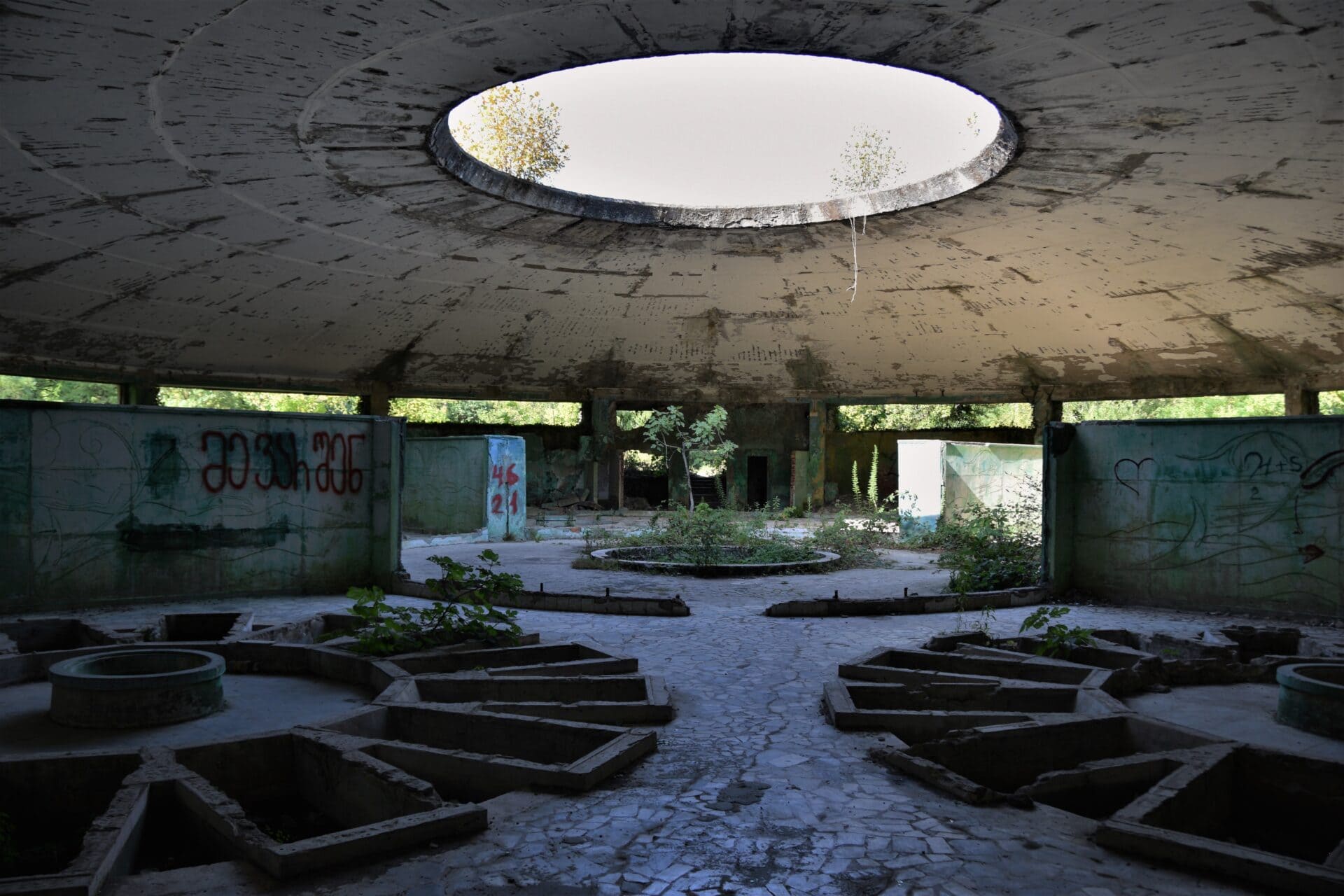
HOW TO GET TO TSKALTUBO FROM KUTAISI (and back)
Located only 15 kilometres northwest of Kutaisi, Tskaltubo is easily reached by either bus or private taxi.
There are two marshrutkas (#30 and #34) connecting the two towns, however, #30 is more convenient. Cross the Red Bridge near the tourist information, and you’ll find the buses on your left-hand side. Marshrutkas leave every 15-20min, between 8am and 7pm, and cost 2 GEL.
#34 leaves from Kutaisi Central Bus Station but only runs once every hour between 9am and 6pm.
Alternatively, if you are travelling in a group you could opt for a Bolt taxi (roughly 15 GEL) and split the price.
Once in Tskaltubo you are free to leave the marshrutka anywhere, however, I suggest you do so at the top of the park and start your exploration of Tskaltubo there.
To get back simply flag down a marshrutka on the road towards Kutaisi. They will pick you up at any point. Be aware that the last minibus leaves Tskaltubo at around 7pm. You will find regular taxis in front of the post office at the top of the park, however.

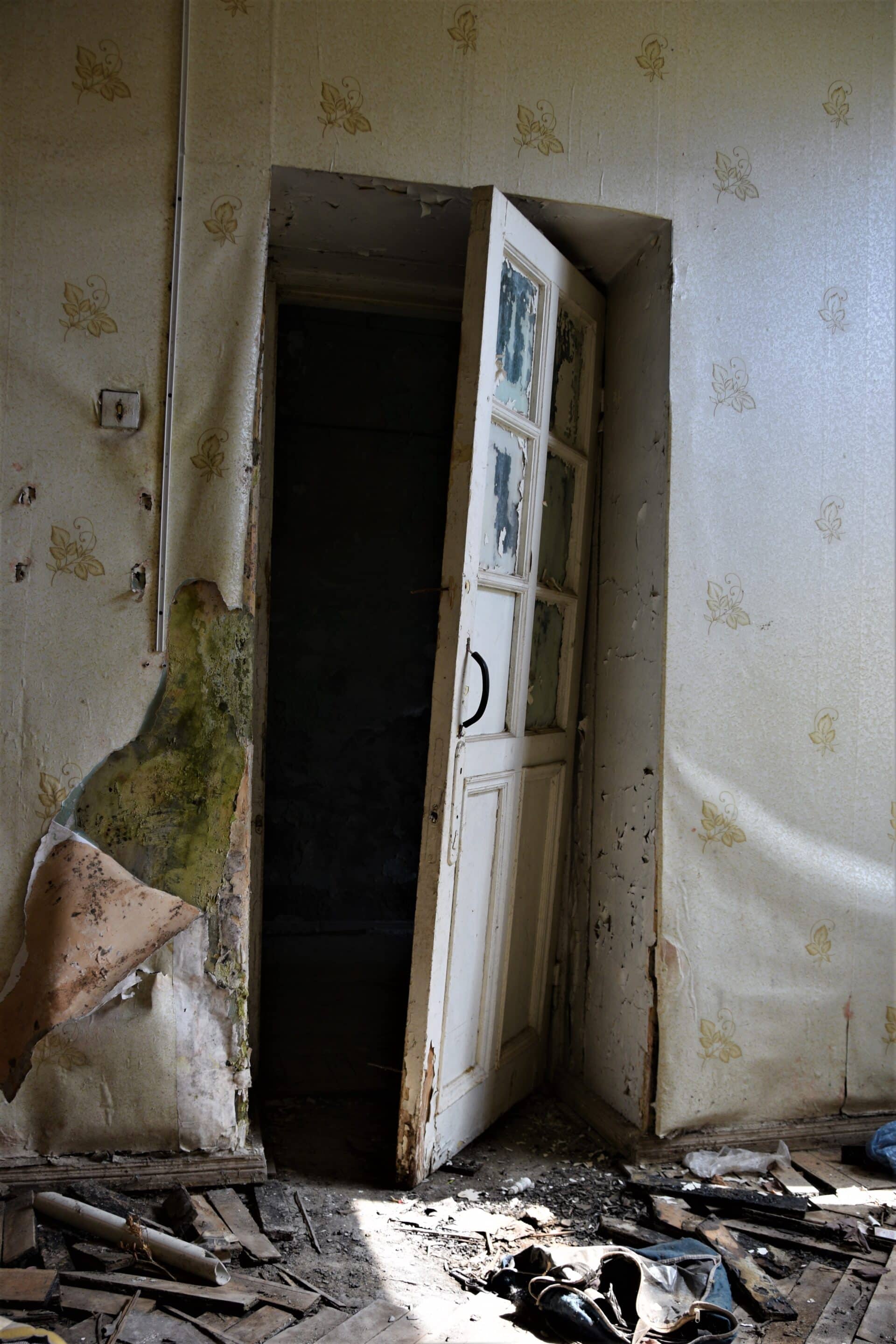
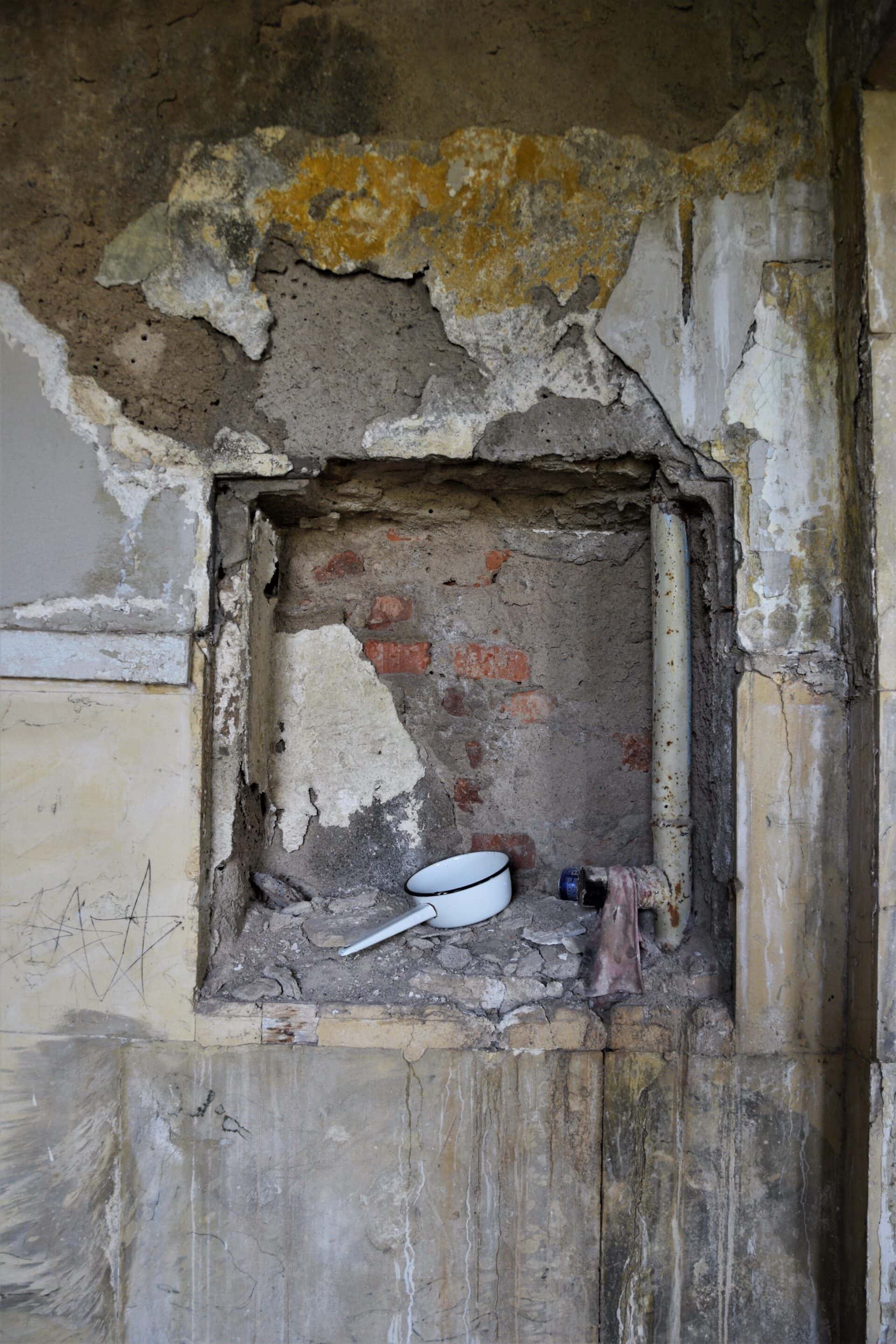
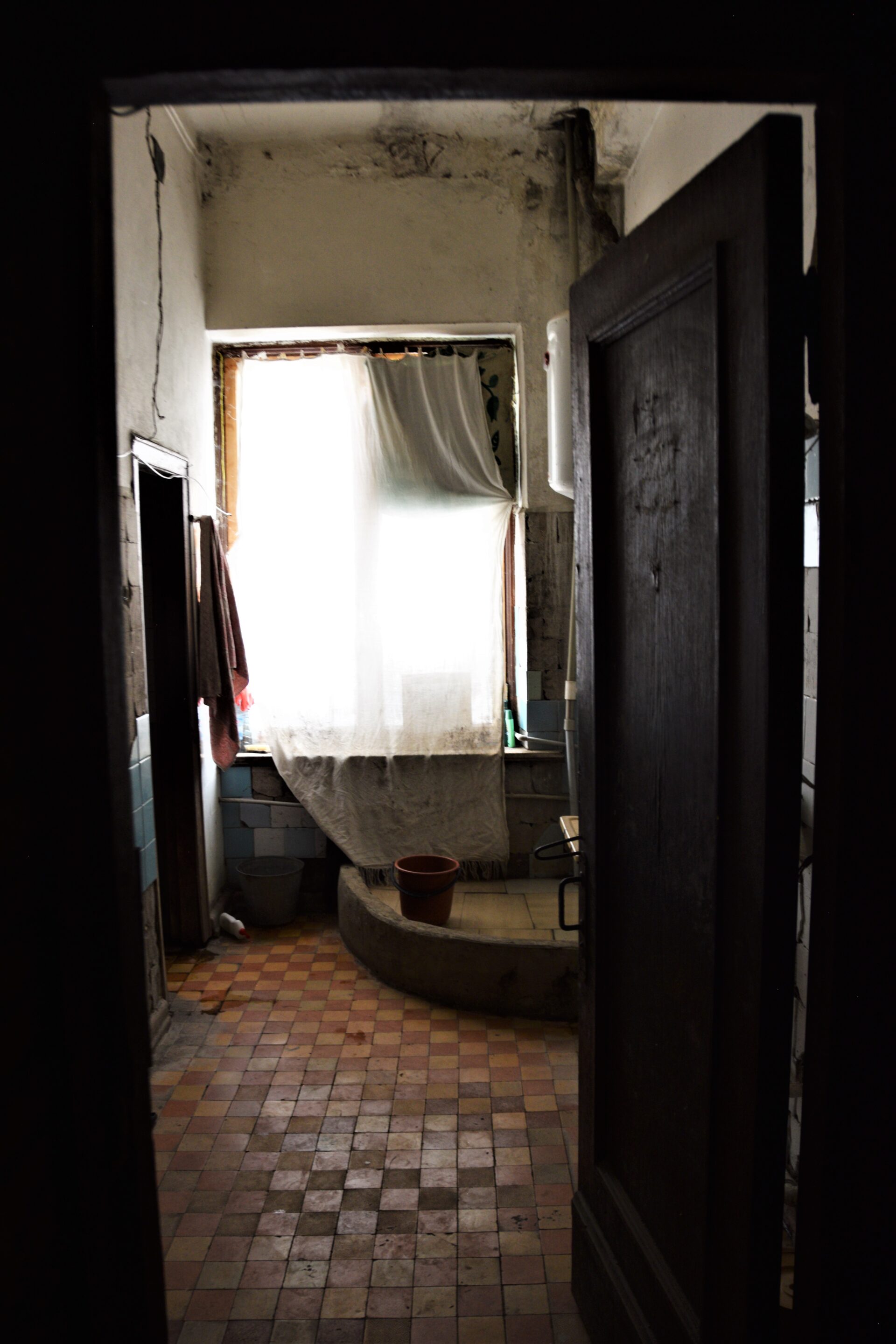
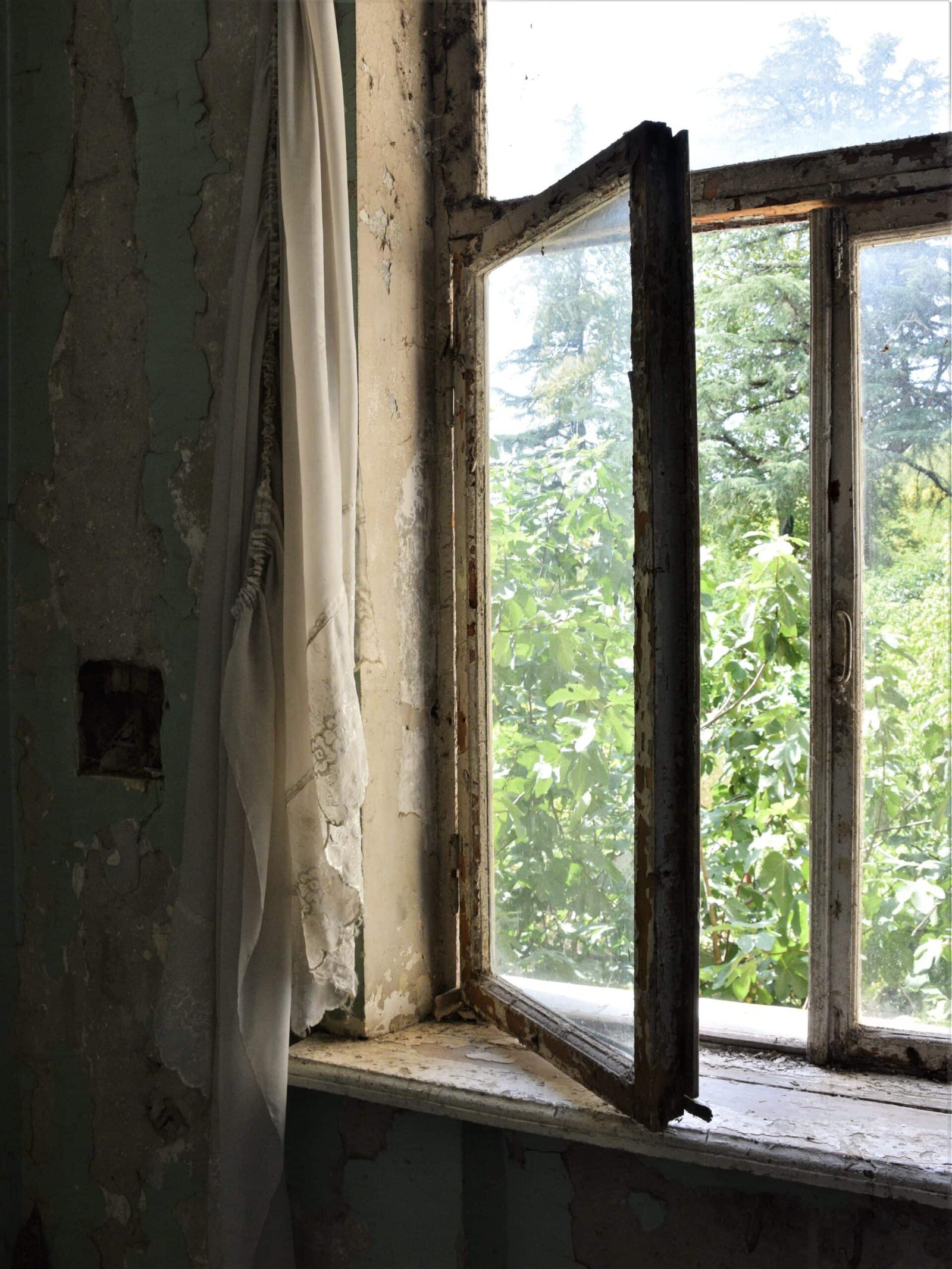
WHERE TO NEXT?
For more content consider following me on Instagram.
Fascinated by the obscure and unusual? Here are more strange places from around the world:
THE CREEPY PRISON MUSEUM OF SHKODRA
